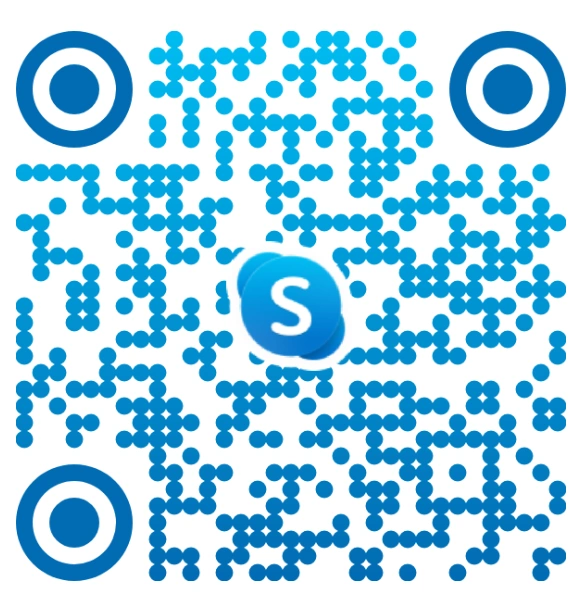Mistral vs LLaMA 3: Which Model Solves Your Domain-Specific AI Needs?
Introduction
As generative AI becomes a vital part of modern business operations, selecting the right large language model (LLM) involves more than just checking benchmark scores. While metrics like MMLU and GSM8K offer insights into general performance, they don’t always reflect how well a model will meet your industry-specific requirements. Whether it’s legal compliance, multilingual support, or fine-tuning for niche use cases, the real challenge lies in finding the model that best aligns with your domain needs.
Two open-source models dominating the AI landscape in 2025 are Mistral and LLaMA 3. Both have gained massive attention for their performance, scalability, and community support. Whether you’re comparing LLaMA 3.1 vs Mistral 7B, exploring Mistral 7B benchmarks, or looking at Mistral 7B vs LLaMA 3.1 8B, it’s clear these models offer strong capabilities, but with different strengths depending on the application.
In this blog, we’ll break down the key differences between Mistral vs LLaMA 3 in a clear, practical, and easy-to-understand way. You’ll learn how each model performs across various industries, how they handle fine-tuning, what infrastructure they need, and which one is better suited for your specific AI goals.
What is Mistral?
Mistral is a powerful open-weight LLM released by Mistral AI, known for its compact yet highly capable architecture. The model was designed with efficiency and modularity in mind, making it a popular choice for startups and enterprises seeking lightweight deployment with strong performance.
Key Features:
- Model size: The flagship Mistral 7B uses grouped-query attention and sliding window attention to offer optimized performance.
- Open-weight license: Fully open for commercial use.
- Modular architecture: Easy to fine-tune or integrate with custom pipelines.
- Strong multilingual abilities: Especially in European languages.
Due to its openness and flexibility, Mistral 7B vs LLaMA 3 has become a common comparison in enterprise settings focused on control and customization. This choice often plays a key role in shaping scalable and secure enterprise IT solutions built around large language models.
What is LLaMA 3?
LLaMA 3, developed by Meta AI, is the latest evolution of the LLaMA (Large Language Model Meta AI) series. Known for its balance between performance and openness, LLaMA 3 is available in 8B and 70B variants, with LLaMA 3.1 as a notable update offering improved reasoning and multilingual capabilities.
Key Features:
- Model variants: Available in LLaMA 3.1 8B and larger 70B versions.
- Extensive training data: Trained on over 15 trillion tokens including code, languages, and domain-specific datasets.
- Improved fine-tuning compatibility: Especially with LoRA, QLoRA, and other adapters.
- Support from Meta and third-party tools: Rich ecosystem and integration options.
When comparing Mistral AI vs LLaMA 3, organizations often weigh LLaMA’s broader community support against Mistral’s compact design and ease of deployment.
Key Differences Between Mistral and LLaMA 3
When comparing Mistral vs LLaMA 3, it’s important to look beyond surface-level features. These two leading open-source LLMs offer distinct advantages based on their architecture, licensing models, fine-tuning support, and performance on real-world benchmarks. Let’s discuss.
1. Model Size and Architecture
The architecture and size of an LLM can greatly influence its speed, efficiency, and the complexity of tasks it can handle.
- Mistral 7B is designed for efficiency. With fewer parameters, it still delivers impressive reasoning power and performs well in constrained environments. It’s ideal for businesses that want solid results without investing in heavy infrastructure.
- LLaMA 3.1 8B/70B provides more depth and scale, handling complex tasks with a larger parameter count. It excels in long-context processing, detailed analysis, and data-heavy enterprise workflows.
Summary: Mistral does more with less, while LLaMA 3 relies on scale to deliver strong results across broader use cases.
2. Training Data and Transparency
Understanding how a model is trained is essential for businesses concerned with ethics, compliance, and trustworthiness.
- Mistral shares partial information about its training but stands out for its open-weight license and commercial flexibility. It’s trusted by developers who prioritize transparency and freedom.
- LLaMA 3, developed by Meta, shares general training details but doesn’t release its full dataset or training scripts. Its use is still governed by a custom license that limits how it can be redistributed.
Bottom line: For teams that prioritize openness, Mistral 7B vs LLaMA 3 comparisons often favor Mistral due to its transparency and fewer restrictions.
3. Performance Across Benchmarks (MMLU, GSM8K, etc.)
Benchmarks offer measurable insight into how well a model performs on academic and practical tasks.
- LLaMA 3.1 8B typically scores slightly higher than Mistral 7B on popular benchmarks like MMLU (language understanding) and GSM8K (math reasoning). These scores suggest it handles complex queries with more nuance.
- Mistral 7B, despite being smaller, performs remarkably well, especially in latency-sensitive environments and scenarios where cost efficiency matters.
Conclusion: LLaMA may have the edge in scorecards, but Mistral 7B vs LLaMA 3 becomes a matter of context—efficiency vs raw performance.
4. Fine-Tuning and Adaptability
How well a model adapts to your domain depends on its ability to fine-tune quickly and affordably.
- Mistral offers faster, lighter fine-tuning options. Its smaller size allows businesses to train custom models on in-house data without major compute investments.
- LLaMA 3 supports a wide array of tools for parameter-efficient tuning, and it works smoothly with libraries like LoRA and Hugging Face, making it attractive for larger teams.
Verdict: Choose Mistral for agile, cost-effective customization; choose LLaMA 3 for deep integrations in larger AI pipelines.
5. Licensing and Commercial Usage Rights
Understanding licensing terms is critical when integrating LLMs into real-world products.
- Mistral is completely open-weight, allowing you to use, modify, and deploy the model freely, even for commercial purposes—no red tape or hidden conditions.
- LLaMA 3 comes with a more restrictive license. You can use it commercially, but redistribution or open-hosting requires Meta’s approval.
Conclusion: In the Mistral AI vs LLaMA 3 comparison, Mistral offers a more straightforward, risk-free path for business deployment.
6. Ecosystem and Community Support
A strong developer ecosystem makes it easier to solve problems, learn best practices, and build faster.
- LLaMA 3 has a thriving global community and is supported by Meta, making it easy to find tutorials, tools, and use-case examples.
- Mistral has been gaining momentum quickly, especially among developers who value openness and control. The community is growing, with more third-party integrations emerging every month.
Takeaway: While LLaMA 3 currently leads in community size, Mistral is rapidly becoming a favorite in the open-source space.
7. Integration and Tooling Options
Ease of integration plays a crucial role in AI model development, helping reduce overall development time and accelerating time to market.
- LLaMA 3 is plug-and-play with popular AI tools such as Hugging Face Transformers, LangChain, and PyTorch, making it easy to implement at scale.
- Mistral is compatible with most modern AI frameworks but may require slightly more manual setup for enterprise-level production use.
Summary: LLaMA 3 is easier to integrate out of the box, while Mistral delivers flexibility for teams ready to invest in a custom setup.
Also Read : ChatGPT vs Gemini vs Claude: Which AI Model Best Suits Enterprise Integration?
Which Model Solves Your Domain-Specific AI Needs?
The right choice between Mistral and LLaMA 3 depends on several factors, including your industry focus, language coverage, infrastructure needs, and long-term scalability. Below is a breakdown based on common enterprise considerations.
1. Evaluation by Domain: Legal, Healthcare, Finance, Retail, etc.
| Industry | Recommended Model | Reason |
| Legal | Mistral | Easy to fine-tune, fast deployment |
| Healthcare | LLaMA 3.1 | Handles large medical corpora better |
| Finance | LLaMA 3.1 | Better numerical reasoning |
| Retail | Mistral | Efficient and lightweight chatbot solutions |
2. Language Support and Multilingual Capabilities
LLaMA 3.1 supports over 30 languages and is particularly effective in multilingual use cases, making it suitable for global products or content generation. Mistral 7B performs well in European languages but falls short when it comes to low-resource or less common languages, limiting its flexibility in cross-regional projects.
3. Inference Cost and Infrastructure Requirements
Mistral 7B is optimized for efficiency and runs well on standard or mid-range GPUs like A100 or even T4, making it cost-effective for smaller teams or startups. In contrast, LLaMA 3.1’s larger variants (8B/70B) require significantly more computing power, which can drive up infrastructure costs for production deployments.
4. Customization and Prompt Engineering Potential
Mistral is easier to fine-tune for narrow tasks and adapts quickly to prompt engineering, making it ideal for building domain-specific tools or lightweight assistants. LLaMA 3, however, is better suited for more advanced setups involving Retrieval-Augmented Generation (RAG), multi-agent systems, or API-based tool use.
5. Model Responsiveness and Latency
Mistral offers quicker response times and lower latency, which is critical for real-time applications like live chat, virtual assistants, or on-device AI. LLaMA 3 provides richer, more in-depth outputs, but with slightly slower inference — which may not suit use cases that demand instant interaction.
6. Long-Term Viability and Support
LLaMA 3 benefits from Meta’s long-term commitment, with a clear roadmap, frequent updates, and a large developer ecosystem. While Mistral is a newer player, it’s gaining traction quickly in the open-source community and offers greater flexibility for teams looking to experiment or innovate faster.
Each model brings distinct strengths, from efficient deployment to advanced language processing. Selecting the right one is essential, especially for building scalable solutions like AI agents for business.
Also Read : FastAPI vs Flask: Exploring Frameworks for Scalable AI-Powered Web Solutions
Real-World Use Cases of Mistral vs LLaMA 3
Both Mistral and LLaMA 3 shine in different industry settings. Below are a few practical examples where one model may outperform the other based on specific domain needs.
1. Enterprise Virtual Assistants
- Mistral 7B: Fast, customizable, and affordable for internal enterprise bots.
- LLaMA 3.1: Better for multi-turn conversations in complex workflows.
2. Medical Data Analysis
- LLaMA 3.1: Trained on larger medical datasets, shows superior diagnostic reasoning.
- Mistral: Usable in lightweight mobile or remote healthcare apps.
3. Legal Document Review
- Mistral: Perfect for fine-tuning on jurisdiction-specific language models.
- LLaMA 3: Suitable for multilingual legal firms needing broader context understanding.
4. Financial Forecasting
- LLaMA 3 wins with better arithmetic and data summarization.
- Mistral works well for domain-specific prompt tuning in fintech.
5. Retail Chatbots and Recommendation Engines
- Mistral’s low latency makes it ideal for customer-facing tools.
- LLaMA 3 offers richer dialogue context, which can enhance upselling features.
Why Choose Amplework for Your Domain-Specific AI Needs?
At Amplework, we don’t just deploy large language models—we help you select, customize, and scale the right LLM tailored to your unique business challenges. Whether you’re building AI-powered legal advisors using Mistral 7B or developing multilingual customer support chatbots with LLaMA 3.1, our focus is always on delivering practical, production-ready solutions with measurable impact. Through our end-to-end AI/ML development services, we ensure your models are not only technically sound but also aligned with real-world business goals.
Our dedicated team of AI engineers, data scientists, and domain experts ensures:
- Seamless model integration with your existing tech stack
- Cost-optimized infrastructure and deployment, whether cloud-based or on-premise
- End-to-end lifecycle support, from proof of concept to full-scale production rollout
We’ve successfully delivered AI projects across sectors like healthcare, finance, e-commerce, and public services, each using the best-fit model based on project goals and constraints. Still debating Mistral 7B vs LLaMA 3.1 8B? Our team offers clear guidance with benchmark evaluations, architecture planning, and hands-on deployment support to help you make the right call.
Conclusion
In the comparison of Mistral vs LLaMA 3, there’s no clear winner—just the model that fits your specific needs best. Mistral 7B is ideal for teams prioritizing speed, low latency, cost-effectiveness, and full commercial freedom. It’s especially useful in environments with limited resources or where deployment flexibility is key. Meanwhile, LLaMA 3.1 8B offers stronger reasoning abilities, better multilingual support, and access to a well-established ecosystem, making it a great choice for more complex, large-scale applications. As large language models become more common in real-world use, it’s essential to evaluate them not just by benchmark scores, but by how well they align with your infrastructure, domain requirements, and long-term goals.
Frequently Asked Questions (FAQ)
Can I use Mistral 7B for commercial projects?
Yes, Mistral 7B is fully open-weight and licensed for unrestricted commercial use. It’s ideal for businesses seeking flexibility, legal clarity, and ownership over their AI deployment and customization pipeline.
Is LLaMA 3.1 open source?
LLaMA 3.1 is not fully open-source. Meta provides access under a specific license, which includes usage restrictions on redistribution, modification, and commercial deployment in certain contexts without prior approval.
Which model is better for multilingual support?
LLaMA 3.1 performs better for multilingual tasks due to broader language coverage and larger training datasets. It handles complex cross-language prompts and multilingual workflows more effectively than Mistral 7B.
What are the infrastructure requirements for Mistral 7B?
Mistral 7B is optimized for efficiency and low resource use. It runs on consumer-grade GPUs and is suitable for edge deployments, making it ideal for startups or resource-constrained environments.
Can Mistral and LLaMA 3 models be fine-tuned for my industry?
Yes, both models support domain-specific fine-tuning. Mistral 7B is more cost-effective and faster to fine-tune, while LLaMA 3.1 benefits from broader ecosystem tools for scalable fine-tuning processes.
Which performs better on benchmarks like MMLU or GSM8K?
LLaMA 3.1 generally scores higher than Mistral 7B on MMLU and GSM8K benchmarks. However, Mistral still performs competitively, especially in environments where latency and cost are critical factors.
What’s better for low-latency applications like chatbots?
Mistral 7B is better suited for low-latency applications such as chatbots due to its compact architecture, faster response times, and ability to deliver real-time performance with fewer compute resources.
Is LLaMA 3 easier to integrate with popular AI tools?
LLaMA 3 integrates smoothly with popular AI tools like Hugging Face, LangChain, and PyTorch, making it easier for teams to adopt and deploy within their existing development workflows, especially with the support of expert AI integration services.


 sales@amplework.com
sales@amplework.com
 (+91) 9636-962-228
(+91) 9636-962-228





